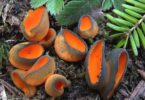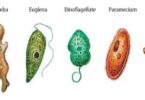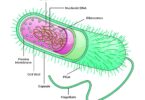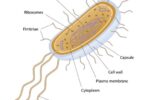MCQ on classification – Neet biology class 11th 2022, MCQ Questions for Class 11 Biology Chapter 1 “The Living World” with Ans, Check the below NCERT MCQ Questions for Class 11 Biology Chapter 1 “The Living World” with Answers.
MCQ Questions for Class 11 Biology with Answers were prepared based on the latest exam pattern. We have provided The Living World Class 11 Biology MCQs Questions on classification with Answers to help students understand the concept very well. It is useful for NEET / CSIR/ UGC NET/CBSE / ICSE EXAM/AFMC EXAM /STATE LEVEL MEDICAL EXAM 2022
How Organisms are Classified: Basics
There are millions of species of organisms on Earth. A species is defined as a group of organisms that can reproduce to produce fertile offspring. These species can be classified into groups by the features that they share e.g. all mammals have bodies covered in hair, feed young from mammary glands and have external ears (pinnas). Biological classification is defined as the process of grouping organisms according to certain similarities.
Linnaeus proposed the two kingdoms of classification, He classified organisms in the animal kingdom as Animalia and in the plant kingdom as Plantae. There were certain limitations related to biological classification. Classification of two kingdoms as it does not distinguish between eukaryotes and prokaryotes, unicellular and multicellular organisms, and photosynthetic and non-photosynthetic organisms and know MCQ on classification.
RH Whittaker suggested the five rankings. The classification of these five kingdoms is as follows: Monera, Protista, Fungi, Plantae, and Animalia. The classification was based on the organization of the thallus, the cell structure, the diet, the phylogenetic relationship, and the reproduction. Let us read about MCQ on classification.
MCQ ON CLASSIFICATION
Multiple Choice Questions & Answers (MCQs) focuses on “Living World” class 11 biology for neet exams 2022 on topic- MCQ on classification.
1. Identify the incorrect match.
(a) Physiology – Study of functions and processes of life
(b) Pedology – Soil science
(c) Limnology – Study of fresh water
(d) Kinesiology – Fossil study
Answer: (d) Kinesiology – Fossil study
2. The Phylogenetic system of classification was put forth by
(a) Theophrastus
(b) George Bentham and Joseph Dalton Hooker
(c) Carolus Linnaeus
(d) Adolf Engler and Karl Prantl
Answer: (d) Adolf Engler and Karl Prantl
3. Two taxonomic species are distinguished from each other by
(a) their failure to interbreed
(b) their ability to exchange gene freely
(c) their similarity in morphological characters
(d) discontinuity in a set of correlated characters
Answer: (a) their failure to interbreed
Explanation: Two taxonomic species are distinguished from each other by their failure to interbreed.
4. Musca domestica is common name of
(a) Housefly
(b) Mosquito
(c) Snail
(d) tiger
Answer: (a) Housefly
Explanation: Musca domestica is the common name of housefly.
5. Keystone species are
(a) important for ecosystem
(b) important for plants
(c) endangered species
(d) rare species
Answer: (a) important for ecosystem
Explanation: Keystone species are plants or animals species that play a unique and crucial role in the way an ecosystem functions. They are very important for ecosystem to function properly.
6. The study of fish culture is called
(a) histology
(b) herpetology
(c) ichthyology
(d) pisciculture
Answer: (d) pisciculture
7. National Botanical Research Institute is located in
(a) Shimla
(b) Dehradun
(c) Howrah
(d) Lucknow
Answer: (d) Lucknow
Explanation: National Botanical Research Institute is located in Lucknow.
8. Biosystematics aims at
(a) Identification and arrangement of organisms on the basis of cytological characteristics
(b) The classification of organisms based on broad morphological characters
(c) Delimiting various taxa of organism and establishing their relationships
(d) The classification of organisms based on their evolutionary history and establishing their phylogeny on the totality of various parameters from all fields of studies
Answer: (d) The classification of organisms based on their evolutionary history and establishing their phylogeny on the totality of various parameters from all fields of studies
9. In angiosperm, characters of flowers are used in classification because
(a) Flowers are attractive
(b) Flowers are large
(c) Characters of flowers are conservative
(d) None of the above
Answer: (c) Characters of flowers are conservative
10. Scientific name of plants are given by
(a) International code for Botanical nomenclature
(b) International code for biological plants
(c) Indian code for Botanical nomenclature
(d) International code for zoological nomenclature
Answer: (a) International code for Botanical nomenclature
Explanation: The scientific names of plants are given by International code for Botanical nomenclature.
ALSO READ:-
● YOU CAN WATCH BIOLOGY SIR Youtube channel
11 A system which gets a continuous flow of energy is called
(a) micropropagated system
(b) closed system
(c) open system
(d) steady state
Answer: (c) open system
12. Solanum, Panthera, Homo are examples of
(a) Family
(b) Division
(c) Genera
(d) Species epithet
Answer(c) Genera
Explanation: Solanum, Panthera, Homo are examples of generic names.
13. which of the following is correct?
(a) Musca domestica Order – Diptera Family – Muscidae Phylum – Arthropoda
(b) Mangifera indica Order – Sapindales Family – Anacardiaceae Phylum – Gymnospermae
(c) Triticum aestivum Order – Poles Family – Monocotyledons Phylum – Angiospermae
(d) Panthera leo Order – leo Family – Felidae Phylum – Mammal
Answer: (a) Musca domestica Order – Diptera Family – Muscidae Phylum – Arthropoda
Explanation: Mangifera indica belongs to Phylum Angiosperm. Triticum aestivum belongs to family Poaceae.
Panthera leo belongs to order Carnivora.
Q14. Binomial Nomenclature was given by
(a) Ernst Mayr
(b) Alexander Agassiz
(c) Carolus Linnaeus
(d) Alexander Agassiz and Carolus Linnaeus
Answer: (c) Carolus Linnaeus
Explanation: The system of providing scientific names with two components i.e. generic name and specific epithet is called Binomial Nomenclature. Binomial Nomenclature was given by Carolus Linnaeus.
15. Systematics deals with
(a) Nomenclature of new organisms
(b) Evolutionary relationship between organisms
(c) Identification of newly discovered organisms
(d) All of these
Answer: (d) All of these
Explanation: Linnaeus used Systema Nature as the title of his publication. The scope of systematics includes identification, nomenclature and classification. Systematics takes into account evolutionary relationship between organisms.
16. Which of the following shows maximum diversity?
(a) Plants
(b) Animalia
(c) Monerans
(d) Protistans
Answer: (b) Animalia
17. Which of the following does not come under taxon?
(a) Species
(b) Kingdom
(c) Division
(d) Key
Answer: (d) Key
Explanation: Taxon is a group of one or more population of organisms.
Kingdom, division and species come under taxon but key is taxonomical aid.
18. The ozone layer is found in the
(a) hydrosphere
(b) stratosphere
(c) lithosphere
(d) troposphere
Answer: (b) stratosphere
19. Taxonomic studies depends on
(a) Ecological information of organisms.
(b) Structure of cell and development process of organisms.
(c) External and internal structure of organisms.
(d) All of the above.
Answer: (d) All of the above.
Explanation: Taxonomic studies depends on ecological information of organisms, structure of cell and development process of organism and external and internal structure of organisms.
20. Wheat belongs to division ______.
(a) Angiosperm
(b) Gymnosperm
(c) Peace
(d) None of the above
Answer: (a) Angiosperm
Explanation: Wheat belongs to Angiosperm division.







Leave a Comment